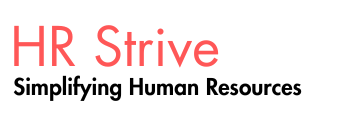Business Intelligence
Business intelligence can be described as the ability to use information to
gain a deeper understanding of an organization and its parts, to see how. The
whole organization and its parts are performing (through business metrics) and
to make sound business decisions that are grounded in relevant and accurate
facts rather than assumptions or "gut feelings." A commitment to good
governance requires more informed, transparent, and accountable decisions, and
better business intelligence makes those decisions possible.
An organization's business
intelligence system has three basic components:
·
Data gathering.
Data is routinely gathered through different computer systems in all
parts of the organization (for example, point-of-sale performance, purchasing
and sales transactions, employee and customer records, security terminals).
·
Data warehousing. Data gathered from different systems is translated into a
standard format, cleaned (or "scrubbed") of errors and duplications,
and then stored in databases related to specific uses (for example, operations,
finance, sales, HR). Organizations that have invested in an enterprise resource planning (ERP) system are able to integrate
these distinct databases. This allows everyone in the organization access to
the same current data and improves communication and coordination. ERP products
are "suites" of integrated applications for special purposes, such as
those shown in Exhibit 36. The data warehouse is integrated but divided into
separate sections or data marts that share reporting and analytical needs or
interests. For example, the human resources information system (HRIS) captures
data related to managing tasks such as payroll, workforce planning, performance
appraisal, training and development, and succession planning. Some ERPs
actually extend outside the organization by supporting electronic data
interchange (EDI). Among other purposes, EDI is often used to automate
outsourcing and vendor payments.
·
Query and reporting capabilities. Users can
access the data they need and use stand-alone or integrated (ERP) business
application software to sort, describe, and analyze data in myriad ways and to
create report graphics, such as bar or pie charts.
Business Intelligence Portals
A business intelligence portal is
a user's point of access to the data and applications stored on an information
system. An effective business intelligence portal:
·
Can be customized to the needs of specific users
so that they view only the data and applications they commonly use. This
simplifies navigation and avoids overwhelming users with visual options and
requiring layers of actions. This is an important factor for HR when selecting
or designing self-service portals for managers and employees.
·
Presents information logically. A well-designed
screen uses visual cues (for example, color, size, screen location, adjacency)
to denote logical relationships.
·
Supports easy navigation from the home page to
and within desired files.
·
Uses automated tools such as "click to
open" and "drag and drop."
